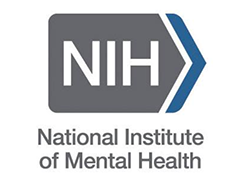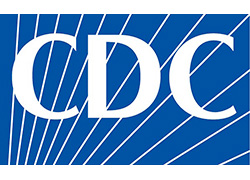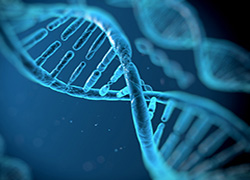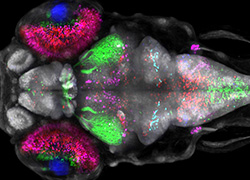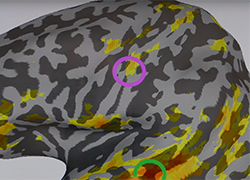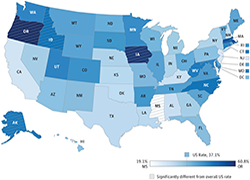Science News
September 7, 2017
The National Institutes of Health has awarded nine research grants totaling nearly $100 million over the next five years for the Autism Centers of Excellence (ACE), a program that supports large research projects aimed at understanding and developing interventions for autism spectrum disorder (ASD).
June 7, 2017
Functional connectivity magnetic resonance imaging (fcMRI) scans may predict which high risk, 6 month old infants will develop autism by age 2 years.
June 1, 2017
In a twin study, researchers found that baby teeth from individuals with autism contain higher levels of lead and low levels of nutrients.
May 26, 2017
Sensory-focused interventions – such as massage, swinging and trampoline exercises and exposure to different textures – reduced sensory and motor impairments in children with autism spectrum disorder (ASD), according to an analysis funded by the Agency for Healthcare Research and Quality (AHRQ), highlighted today in the journal Pediatrics. Meanwhile, an additional AHRQ-supported article in Pediatrics concluded that little evidence currently exists to support the use of nutritional supplements or gluten-free/casein-free diets to improve autistic behaviors in children.
May 26, 2017
The mysteries and impacts of autism continue to challenges us all ... I am pleased to report, however, that two new research reports from AHRQ provide important updates about what tactics are known to be effective—and not effective—in managing ASD behaviors.
April 26, 2017
Neuroscientists have created a 3D window into the human brain’s budding executive hub assembling itself during a critical period in prenatal development.
Tuesday, April 4, 2017
Understanding how the brain develops and functions remains among the most difficult of scientific challenges, as is the effort to understand the causes of conditions that alter its function. Among these is autism spectrum disorder (ASD).
March 24, 2017
Researchers have discovered a pattern of genetic glitches and behavioral features, such as delayed walking, in some cases of autism spectrum disorder (ASD) that could ultimately lead to identification of subgroups and improved treatment.
March 23, 2017
Mark Daly, Ph.D reported that a third of genetic mutations found in individuals with ASD are also found in unaffected people.
February 21, 2017
For children with autism spectrum disorder (ASD), early diagnosis is critical to allow for possible interventions at a time when the brain is most amenable to change. But that’s been tough to implement for a simple reason: the symptoms of ASD, such as communication difficulties, social deficits, and repetitive behaviors, often do not show up until a child turns 2 or even 3 years old.




